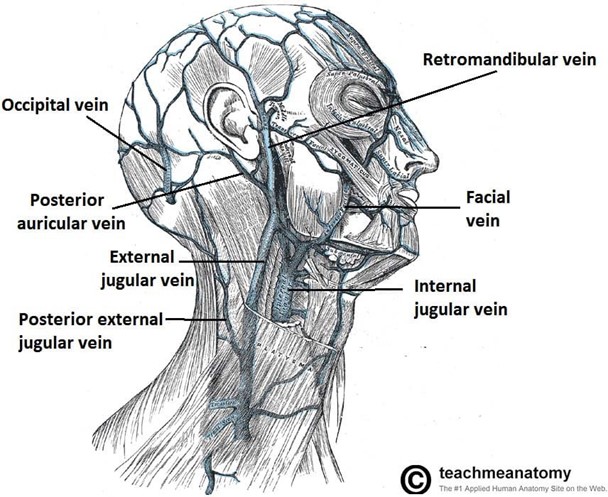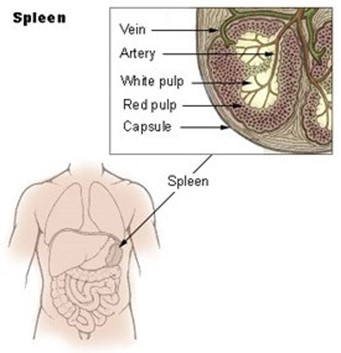Blood from the face and scalp is drained by the:
Superior vena cava.
Subclavian vein.
External jugular vein.
Cephalic vein.
The Correct Answer is C

This is because the external jugular vein drains blood from the face and scalp into the subclavian vein.
Some possible explanations for the other choices are:
Choice A. Superior vena cava.
This is wrong because the superior vena cava is a large vein that collects blood from the head, neck, chest, and upper limbs and returns it to the right atrium of the heart.
It does not drain blood from the face and scalp directly.
Choice B. Subclavian vein.
This is wrong because the subclavian vein is a vein that receives blood from the external jugular vein, the internal jugular vein, and the vertebral vein and joins with the internal thoracic vein to form the brachiocephalic vein.
It does not drain blood from the face and scalp directly.
Choice D. Cephalic vein.
This is wrong because the cephalic vein is a vein that runs along the lateral side of the arm from the hand to the shoulder and empties into the axillary vein.
It does not drain blood from the face and scalp at all.
Normal ranges for blood pressure vary depending on age, gender, health status, and other factors, but a general guideline is that systolic blood pressure (the pressure when the heart contracts) should be less than 120 mmHg and diastolic blood pressure (the pressure when the heart relaxes) should be less than 80 mmHg.
Nursing Test Bank
Naxlex Comprehensive Predictor Exams
Related Questions
Correct Answer is A
Explanation
The cell is the basic unit of structure and function of all known living organisms.
The cell theory states that all living things are composed of cells and that new cells are made from preexisting cells.
Cells are organized from atoms, molecules, and macromolecules, and contain organelles that perform specialized functions.
Choice B is wrong because a molecule is a group of atoms bonded together, not a living unit.
Choice C is wrong because an atom is the smallest unit of matter, not a living unit.
Choice D is wrong because a macromolecule is a large molecule composed of smaller molecules, not a living unit.
Correct Answer is A
Explanation

It is a major component of the lymphatic system and contains T and B lymphocytes.
Choice B is wrong because the spleen does not produce T lymphocytes, but rather stores them.
T lymphocytes are produced in the thymus.
Choice C is wrong because the spleen does not filter lymph, but rather blood. It traps bloodborne microbes and produces an immune response to them.
Choice D is wrong because the spleen consists of one lobe and is located in the upper left abdomen below the diaphragm.
The description in choice D matches the thymus, not the spleen.
The normal size of the spleen in adults is about 12 cm long, 8 cm broad, and 3-4 cm thick, weighing about 200 g.
The normal range of splenic index (the product of length, width, and thickness) is 120-480 cm.
Whether you are a student looking to ace your exams or a practicing nurse seeking to enhance your expertise , our nursing education contents will empower you with the confidence and competence to make a difference in the lives of patients and become a respected leader in the healthcare field.
Visit Naxlex, invest in your future and unlock endless possibilities with our unparalleled nursing education contents today
Report Wrong Answer on the Current Question
Do you disagree with the answer? If yes, what is your expected answer? Explain.
Kindly be descriptive with the issue you are facing.
